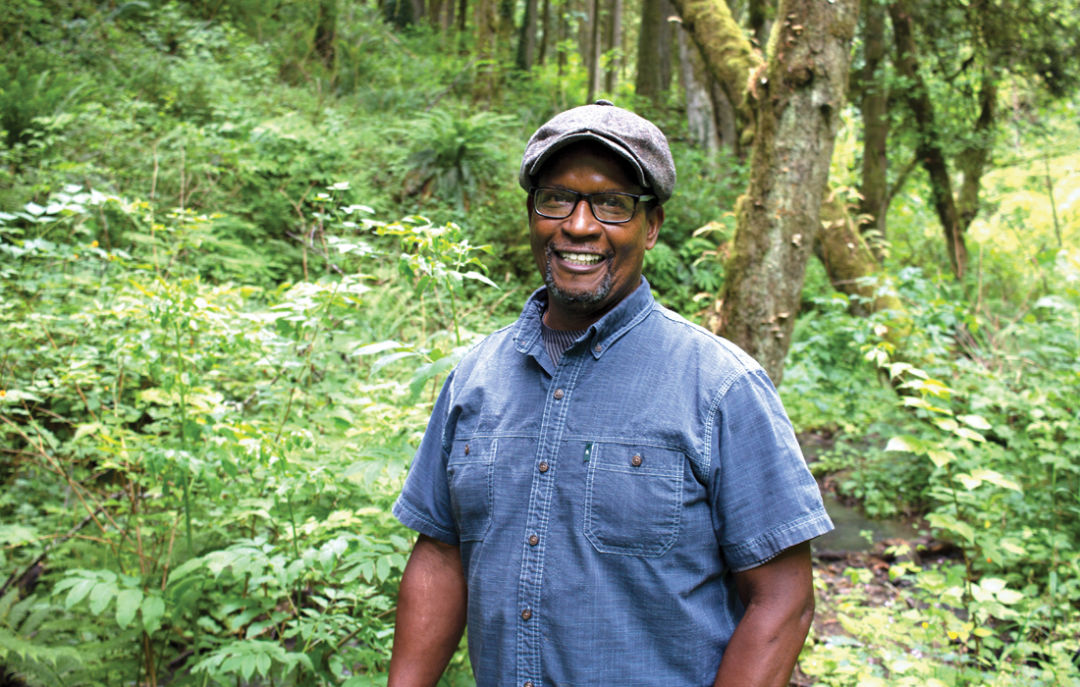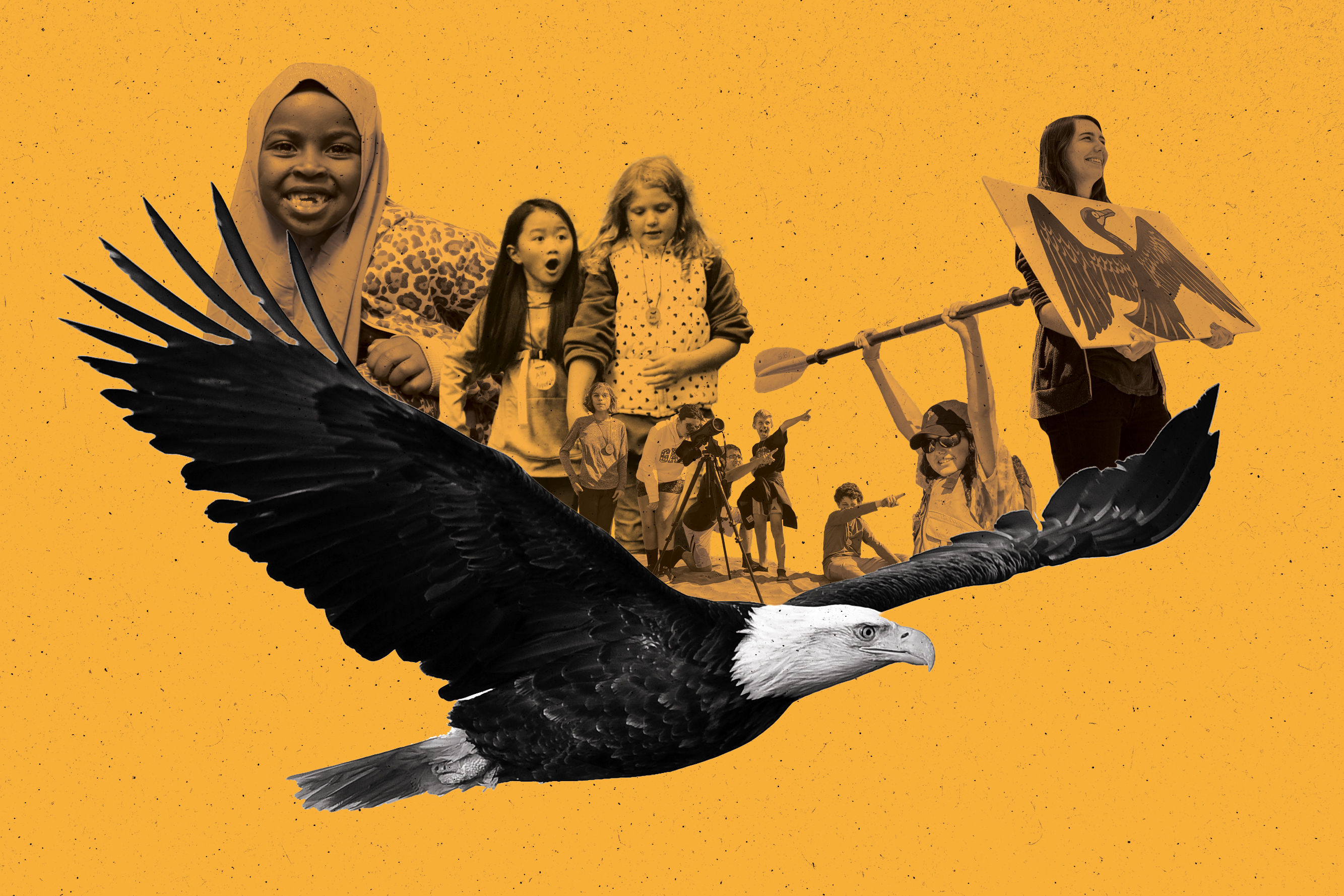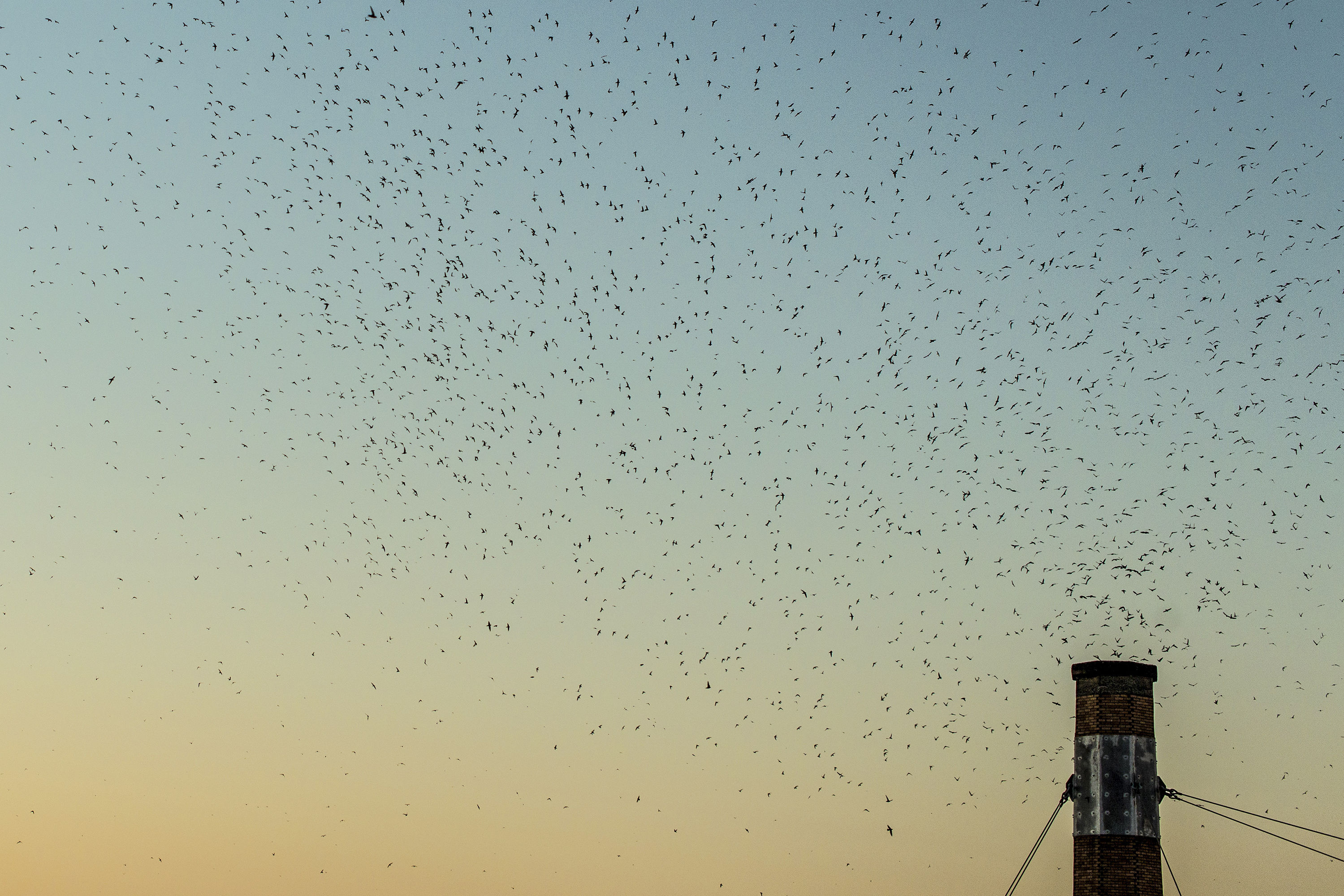Stuart Wells Joins Portland Audubon as New Executive Director

Stuart Wells at Portland Audubon Wildlife Sanctuary
Image: Courtesy of Portland Audubon
Portland Audubon’s new executive director, who started his new job at the head of one of the city’s most venerable environmental organizations in May, is a man on several missions.
There are lofty goals, like finding ever more ways to draw as many people as possible into wildlife conservation, preservation and education.
And then there are the nitty-gritty plans, like finding a new location for the Wildlife Care Center. Oregon’s oldest wildlife hospital, the care center currently shares space with the Portland Audubon Wildlife Sanctuary on NW Cornell Road.
But the 35-year-old animal hospital, which sees on average 4,000 patients per year, needs an update to address everything from its aging septic system to adding modern offerings like an in-house surgical suit.
A search for the perfect location— ideally, closer into town—is underway. At its current location on the edge of Forest Park, the care center is tough to reach for many people, and that speaks directly to the broader goal of making community engagement and wildlife education more accessible for the entire city.
Wells comes with over two decades of conservation experience, including conservation and program development with the Smithsonian National Zoo and as a wildlife biologist with US Fish and Wildlife. He told us more about his plans, including continuing the long-standing nonprofit’s more recent efforts to focus on racial equity and inclusivity, which includes offering paid conservation internships for BIPOC community members.
When did you begin your career in conservation work?
Wells: I’ve always been interested in the natural world. I did my undergraduate work in zoology at Northern Arizona University. My interest in working at zoos centered on how zoos can actually be more involved in field conservation. So those were the kind of jobs I gravitated towards. A lot of folks don’t realize how much zoos are involved in conservation. But I always felt that in order to help improve that metric, you had to work within the organization. So, throughout my career, I’ve been involved in developing programs in zoos that are outreaching, as well as working with other agencies such as US Fish and Wildlife and Game and Fish to augment these wild populations of endangered species.
You have an extensive background in wildlife conservation. What were you doing before you came to Portland?
Wells: I was the director of conservation and science at the Arizona Center for Nature Conservation, where I was involved with local species conservation efforts, such as recovery of the Chiricahua leopard frogs, black-footed ferrets, and narrow-headed garter snakes. Before that, I also worked as a wildlife biologist at US Fish and Wildlife as well as a supervisory biologist for the Smithsonian National Zoo, where I researched cheetahs and looked at ways to improve how they were managed in the zoo setting so that they had the ability to survive in the wild if they were reintroduced. And for my doctorate I researched the reproductive physiology and behavior of the Mount Graham red squirrel, an endangered squirrel species that lives in the Pinaleño Mountains of Arizona—there are only about 70 left in the world.
What inspired you to become executive director at Portland Audubon?
Wells: Portland Audubon is one of the oldest and largest Audubon chapters in the country, and our Wildlife Care Center is the oldest wildlife hospital in Oregon. The legacy of conservation that Portland Audubon has in Oregon, as far as the involvement in helping people understand their connection to the land is what attracted me. It’s not just about fulfilling your interest in birding. We’re involved in conservation and advocacy work in nearly every quadrant of Oregon, from habitat conservation in the rocky coastline to the Klamath Basin to the wetlands in Malheur. I’d also like to introduce the community to some of the work that’s been done historically—such as protecting the Marbled Murrelet Habitat—that has made the current habitat a little more resilient to the effects of climate change we’re seeing now. Had some of these things not been put in place by Portland Audubon many years ago, we may be in a different position. These are things we’d like to continue to do. We will continue to be advocates for protecting habitats and informing people about the importance of understanding biodiversity, especially bird species, who are so, so important for recognizing the impact of climate change.
Can you elaborate on some of the work you’re currently involved in?
Wells: Our biggest focus right now is to identify a new site for the Wildlife Care Center—one that would ideally be located in a place where communities have better access. It’s been a critical mission of Portland Audubon to provide care for animals that might be injured as a result of human-wildlife conflict—birds that are injured from flying into a fence, for instance. And for over 30 years, Portland Audubon has provided this service at the Wildlife Care Center located here on the Sanctuary. But we need a new site. The current location for the Wildlife Care Center is hard to get to. There aren’t really any buses that go up here. We bring in about 4,000 animals a year, and this site is at capacity for handling that number. We’re looking for a site that’s at least four acres—but ideally more than that—so that we can not only build a state-of-the-art Wildlife Care Center, but also have the ability to expand to develop a future community education center. The Wildlife Care Center has always been a source of information about how to avoid human-wildlife conflicts. For some people, their first experience with wildlife is bringing an animal here to the Wildlife Care Center and saying I’m not sure what happened, it looks like it’s not feeling well. That kind of community contact is important. And we want to try and increase the likelihood that people can be involved so they can experience the natural world and learn about how we can be more effective as land stewards.




